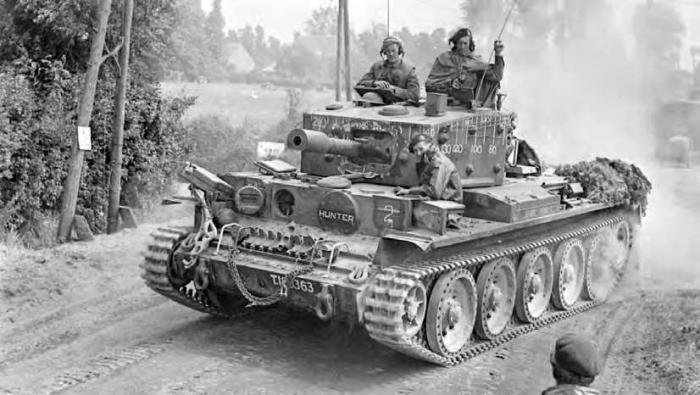Craig Moore investigates the Centaur Mk.IV, an up-gunned vehicle designed to provide close artillery support to British D-Day landing parties
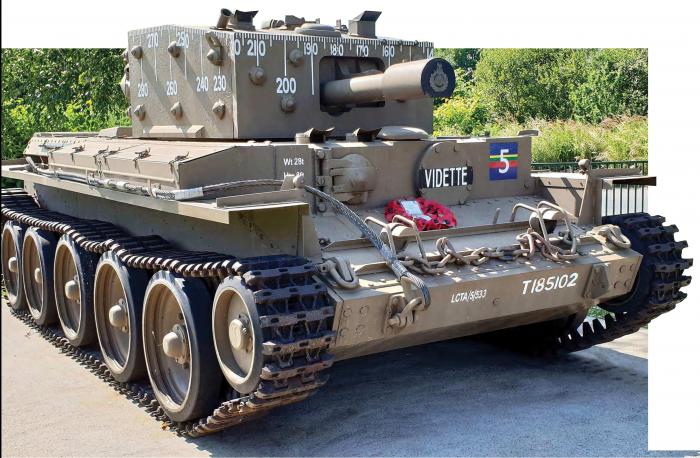
‘The 95mm howitzer gun was intended to be fired from the landing craft at enemy fortifications on the beach’
The Centaur Mk.IV Close Support tank on display at the Pegasus Bridge Memorial Museum at Ranville, near Caen, was built to provide protective artillery fire to the Royal Marines landing on the coast of Normandy on D-Day June 6, 1944. Its 95mm howitzer gun was intended to be fired from landing craft at enemy fortifications on the beach. Built by the car manufacturer Leyland Ltd, this Centaur was part of V Troop, 5th Independent Battery, Royal Marines Armoured Support Group (RMASG). On D-Day it landed at Sword Beach between Hermanville-la-Breche and Lionsur-Mer. It came into contact with the enemy some five hundred yards from the beach and was forced to reverse up to a hedge. In the process, the tank was hit by mortar fire that set the bins and engine compartment on fire. The crew evacuated and the vehicle was left behind as the fighting moved on.
The tank was recovered in 1975 from Hermanville-la-Breche by No.7 Field Workshop, Royal Electrical and Mechanical Engineers (REME), based at Fallingbostel in Northern Germany. It was subsequently restored by No.60 Station Workshop, REME, in Antwerp and put on display in June 1977.
It spent some time sitting opposite the Pegasus Bridge Café then, when the Pegasus Bridge Memorial Museum opened, the tank found a new home here and underwent a full restoration in 2014. Most of the Centaur’s roadwheels, as well as some other parts, are not original.
Many people find it peculiar that the tank is painted brown. In the War Office’s 1944 camouflage instructions, the basic overall colour was changed to khaki drab, which was very similar to the pre-1943 colour, but with a brown rather than a yellow tone. The paint would either be SCC No.2 (khaki brown) or SCC No.15 (khaki green). On D-Day, some vehicles were painted in the new khaki drab scheme while a few select vehicles remained in the pre-1943 olive green. American and Canadian vehicles on the other hand were painted in olive drab. All these basic colours were, of course, also subject to variations caused by the application of the paint, dilution, and wear and tear.
‘Some examples helped silence the German defences at Ouistreham’
New vehicles were sprayed with the overall colours in the factory while older vehicles were repainted in updated schemes by the crews on deployment. US and Canadian vehicles were issued to British troops in olive drab, and in most cases, this overall colour seems to have been retained until either the vehicle needed repainting, or it went for repair and modification – in which case khaki drab was applied. Some amphibious and wading vehicles were painted in Admiralty light grey for the D-Day landings.
Deployment in Normandy 1944
Centaur Mk.IV tanks were crewed by the RMASG and saw action on D-Day, giving covering fire from their landing craft and then afterwards inland. The RMASG was composed of two regiments; the 1st attached to the British 50th Division and the 2nd attached to the 3rd Canadian Division, and one Independent Battery under the British 3rd Division.
Originally the plan was for Centaur 95mm howitzer tanks to be tied down to landing craft, but raised up on a false floor. These flat-bottomed landing craft armed with tank turrets would then be able to get close to the beach and provide the beach storming parties with covering fire. The tank’s engine was to be removed and the vacated space used for ammunition stowage.
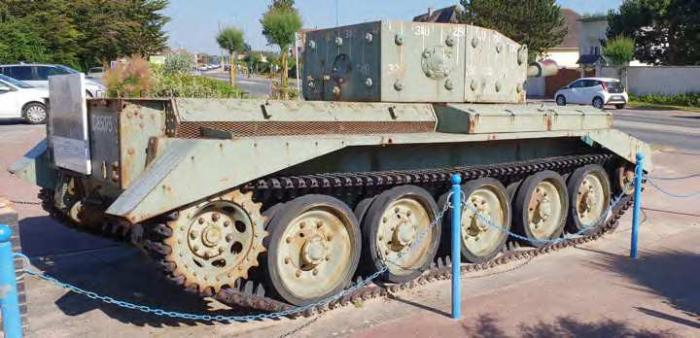
In the event, it was decided that the raised loading position on the false floor was adversely affecting the trim of the landing craft. It made the landing craft top-heavy and thus at risk of capsizing. Several dangerous accidents occurred, so raised decks were ultimately abandoned. Engines were then reinstated, enabling the tanks to be driven ashore after completing the bombardment missions.
The armoured vehicles were initially only intended to operate on overwatch missions during the initial assault, and then only within one mile of the beach. This was because the RMASG did not have a dedicated administrative and maintenance organisation to supply logistics. However, in the event, the RMASG continued to use the Centaurs for up to two weeks after June 6, 1944 and over ten miles inland from the beachheads. Some examples helped silence the German defences at the port of Ouistreham, in support of the iconic attack by Captain Philippe Kieffer and his French commandos. Sherman tanks were used in the re-enactment of the event in the film The Longest Day.
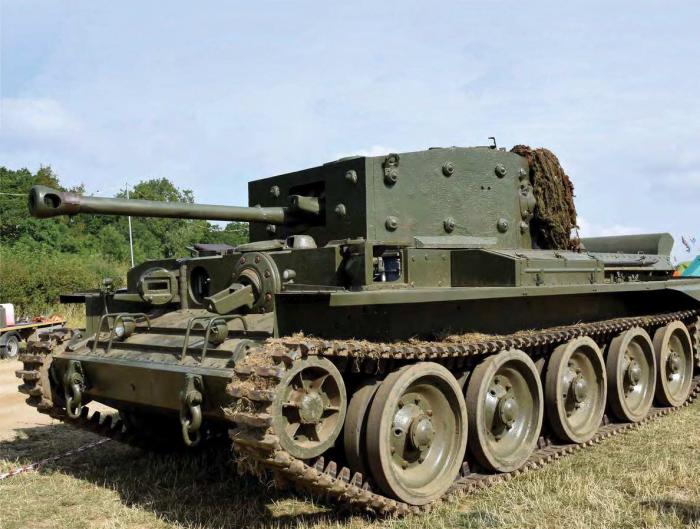
CLOCKWISE FROM ABOVE:
This Centaur tank was originally turretless and fitted with a bulldozer blade. It was used to help remove beach obstacles and make a path off the beach
The Cobbaton Combat Collection’s Centaur Mk.VIII A24L turret – museum owner Tim Issacs plans to fit it to the Centaur Mk.IV tank
Shell damage is visible on the turret. The Centaur hull was fitted with a Cavalier turret which was recovered from the Otterburn firing range
The compass-like turret markings allowed the battery commander to direct the tank howitzers to the correct beach locations
The memorial tank at Hermanville-sur-Mer is painted to look like a British Centaur Mk.IV – its turret is from a very rare Cavalier tank
A restored Centaur Mk.III gun tank armed with a 75mm gun, owned by Lance Varga
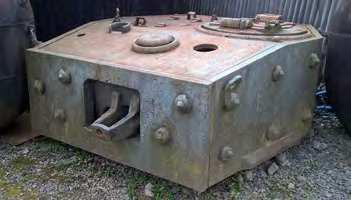
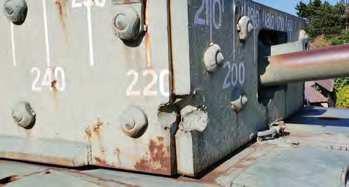
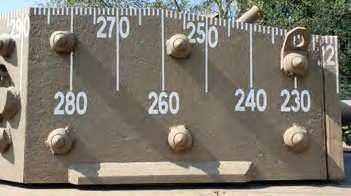
Although most of the Centaur Mk.IVs served inland, the lack of a dedicated logistical unit meant spare parts and vital maintenance equipment were constantly lacking. For example, no engine spares were shipped over to Normandy for the initial landings or the inland campaign. As a consequence, many of these vehicles broke down and were abandoned.
Officially, 51 HE rounds could be stored inside each Centaur. It was also fitted with wadding gear to enable the tank to get off the landing craft and onto the beach safely, without the engine and crew compartment being flooded with seawater. The compass-like turret markings allowed the battery commander, situated outside the tanks, to direct all of the tank howitzers to the correct location on the beach – not dissimilar to the range clocks on World War One battleships. The Battery Commander’s vehicle was a 75mm Sherman tank that also had 360-degree markings on the turret.
More surviving Centaur tanks
There are a number of Centaur tanks in private collections and on public display in museums around the world. They can be found in India, Greece, Myanmar, Holland, France, Portugal, Poland, the USA and the UK.
In the D-Day beach town of Hermanvillesur-Mer, Normandy, there’s a memorial Centaur tank, painted to look like a British Centaur Mk.IV Close Support tank armed with a 95mm howitzer, on display. The degrees of a compass have been stenciled in white onto the vehicle’s turret.
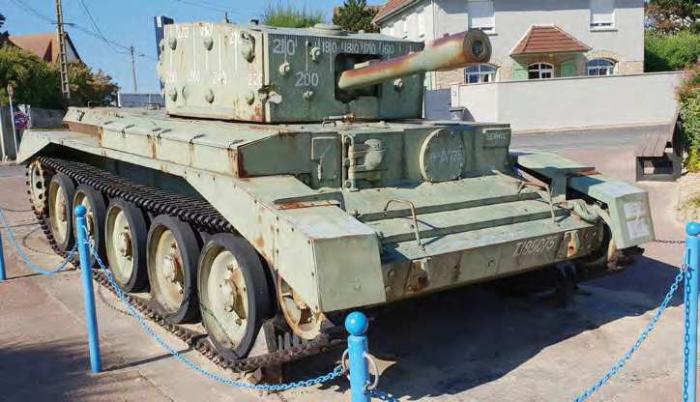
This particular tank was originally turretless and fitted with a bulldozer blade, being used to remove beach obstacles and clear a path off the beach for the vehicles to follow in the first attacking waves. The hull armour kept the crew safe from small arms fire and high explosive shell shrapnel. The vehicle was rebuilt as a gun tank at the Imperial War Museum in Duxford where it was fitted with a Cavalier turret recovered from the Otterburn firing range in Northumberland. Some of the Dozer tank fittings can still be seen on the hull.
Another preserved British Centaur Mk.IV tank can be found at the Cobbaton Combat Collection museum in Chittlehampton, North Devon. It was built in 1944 and converted into a Centaur bulldozer tank in July 1945. The turret was removed and a huge metal blade was added to the front of the tank that could be raised up and down by the adjustment of two long metal arms. It was sold for scrap in 1957 and remained at Pound’s Military Scrap Yard in Portsmouth, until Preston Isaacs, owner of the Cobbaton Combat museum, purchased the tank hull in 1979. The vehicle had damage to the ‘tin metal work’ on the top of the tank because a Churchill had been precariously parked on top of it for a number of years.
Preston used his engineering and metalworking skills to fashion a mockup of a Centaur tank turret and a 95mm gun. This gave visitors an impression of what the Centaur Mk.IV tank would have looked like when it went into battle on D-Day. Sometime after, Isaac managed to pick up a genuine Centaur tank turret from the British Army firing ranges on Salisbury Plain, where originally, turrets were sent after the vehicles were converted into bulldozers. Today, the turret can be seen outside the main hangers at the Cobbaton Combat Collection, chained to two unexploded sea mines. Preston’s son Tim plans to fully restore the turret and fit it onto the hull of the tank.
Inside the vehicle are two manufacturers’ chassis plates. The first relates to when the tank was produced by Leyland Ltd in 1944. Its manufacturing number is 72 and the type is shown as the letter D, matching the designation Mark IV. The tank’s vehicle registration ‘number plate’ was T11243, which is still painted on the outside of the tank. The second manufacturing plate relates to its conversion into a bulldozer.
Centaur’s design
The Centaur tank is powered by a Nuffield Liberty Mk.V 27-litre V-12 410hp engine. The 12 cylinders are fed by two carburettors at one end of the engine. The fuel has to go over all six cylinders on one side and all six cylinders on the other. The fuel sometimes failed to reach the two cylinders furthest away from the carburettors in enough volume, which caused a popping and barking noise. If it had four carburettors, there would have been no issue and they would have given the engine an extra 50-100hp – however, this would have consequently generated more heat.
There are two large hatches in the engine deck which make regular maintenance easy. However, to replace or overhaul the engine, the entire engine deck has to be unbolted and removed. Unlike removing a powerpack on a modern tank, where only a few hoses and electrical cables have to be unclipped, lifting a Liberty engine out of a World War Two Centaur tank is a lot more challenging.
‘Another preserved British Centaur Mk.IV tank can be found at the Cobbaton Combat Collection Museum in Chittlehampton, North Devon’
Like most British tanks, the drive sprocket wheel is at the rear. A driveshaft going down the length of the tank was therefore not required. This enabled the tank to have a lower profile than most late-war German and American tanks. The Centaur was very agile, and a good driver could execute a neutral turn on a road or gravel surface. He would put the gearbox in neutral, rev the engine, pull the left or right tiller, and it would make one track go forward and the other track go backwards, thereby turning the tank on the spot in a 360-degree ‘doughnut’ manouevre – ideal for getting out of trouble. The Christie suspension and the large rubber-rimmed road wheels enabled the tank to negotiate rough terrain without any significant problems.
When the tank was being driven, it was possible to sometimes see red flames popping out of the exhaust pipes. In 1944, if the Normandy cowling curved covers had not been fitted, these exhaust flames and smoke would have been visible to the enemy from a long distance. It was vital to reduce the chance of being spotted so as not to attract an artillery barrage or mortar attack.
Cavalier, Centaur and Cromwell
At first glance, the A24 Cavalier, A27L Centaur and A27M Cromwell tanks appear very similar yet internally, they were very different. Both the A24 Cavalier and A27L Centaur were powered by Nuffield Liberty 410hp engines, the A24
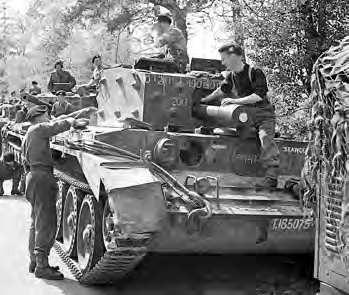
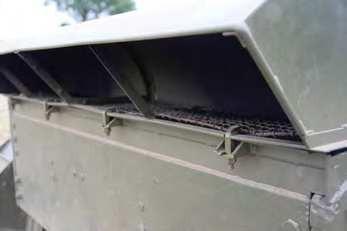
‘Like most British tanks, the drive sprocket wheel is at the rear’
Cavalier used a Wilson Steering gearbox, whereas the A27L Centaur was fitted with a Merritt-Brown gearbox that had four forward gears and one reverse gear. The A27M Cromwell also used a Merritt- Brown gearbox but had a much more powerful Leyland Meteor 600hp tank engine, based on the Rolls-Royce Merlin aircraft engine.
All three tanks can trace their origins back to the 1940 British War Office’s specifications for a replacement for the Crusader cruiser tank. Designs were submitted in 1941 and it was hoped production would start in 1942. The A27M Cromwell tank outperformed the A24 Cavalier and the A27L Centaur, becoming the approved choice. However, problems with manufacturing and the availability of the Meteor engine caused problems. Leyland proposed a stop-gap solution with an uprated Liberty 410hp engine being used to power the tank.
The A24 Cavalier was judged unsatisfactory and did not enter frontline service. Most of the 500 built were used in training but a few were converted to auxiliary armoured roles, notably as armoured artillery observation posts (Cavalier OP).
The first versions of the A24 Cavalier, the A27L Centaur and the A27M Cromwell were armed with a 6-pounder anti-tank gun, but were only used for training. The Centaur II was an experimental version, without a hull machine gun and wider tracks, and ultimately did not enter production. The Centaur III was armed with a 75mm Royal Ordnance quick-firing Mk.V gun. In 1943, 233 Centaur I tanks were upgraded to Centaur III specification and had their 6-pounder guns replaced with 75mm guns.
A27L Centaur tanks were either converted or built as auxiliary armoured vehicles. The Centaur artillery observation post (Centaur OP) was fitted with a dummy gun to give more room inside the fighting compartment for maps and radio equipment. The Royal Engineers operated turretless Centaur armoured recovery vehicles. The Centaur Dozer was also a turretless Centaur hull, fitted with a hydraulically powered, winch-operated dozer blade. Two versions of the Centaur AA anti-aircraft variant were constructed and also saw service on D-Day. Likewise, some damaged Centaurs had their turrets removed and were subsequently utilised as armoured personnel carriers during the Normandy campaign and were called Centaur Kangaroos. The A27M Cromwell tank was ultimately the preferred version of the new cruiser tank, and subsequently entered mass production in Britain.
